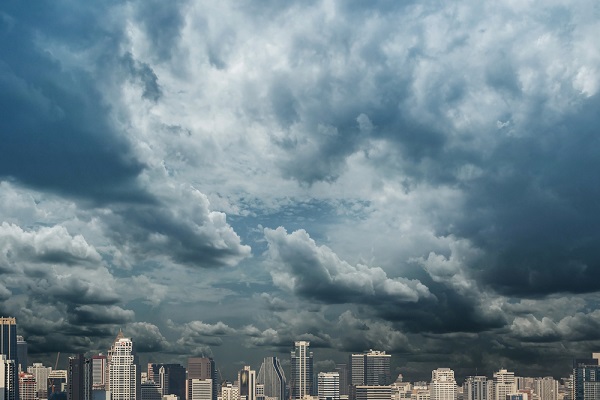


By Sarah Creighton
In 2024, global catastrophes resulted in $154 billion in insured losses, according to Gallagher Re—and 41% of those losses were caused by severe convective storms. Commonly called thunderstorms, these storms can include lightning, torrential rain, hail and high winds and have become a major loss factor for businesses of all types.
Insurance companies regularly monitor the progression of certain types of weather events, including severe convective storms. Using both modeled and historical storm data from an insured’s region, a carrier can gain an understanding of the likelihood of loss in a particular state.
Traditional catastrophe models often rely heavily on historical data. However, these data sets may not accurately reflect future risks due to rapidly changing climate trends. Given this latency and the large geographical area susceptible to severe convective storm activity, insurers are shifting to use as much real-time data as possible when evaluating each risk, limiting the concentration of exposures in higher risk areas. They are also securing reinsurance.
As insurers increase their underwriting restrictions to limit storm exposures, risk mitigation is becoming more important than ever for commercial insureds. Unfortunately, some organizations may use their insurance policy as a maintenance plan, assuming they will be able to make needed repairs once they submit a claim after a weather event. However, if companies don’t keep their buildings in good shape, the heightened risk for the insurance company can lead to higher premiums, higher deductibles, revised terms or even non-renewals.
Here are six ways independent insurance agents can help organizations minimize building damage from severe convective storms:
1) Assess vulnerability before severe weather events. If an organization has advance warning of a severe convective storm, it can determine which parts of its building are most vulnerable to hail and wind. It can then take specific steps to protect those parts of the facility.
2) Perform regular maintenance across the facility. Agents should encourage their clients to keep up with maintenance tasks, some of the most important of which are checking for loose shingles on a regular basis, clearing debris off the roof and cleaning all gutters.
3) Inspect the roof systems. One of the ways a severe storm can cause major damage is by applying pressure to the roof, thereby allowing water to enter the building. Commercial clients should check to make sure their drainage system is fully functional and doesn’t have any holes. Additionally, they should inspect the flashing around chimneys, vents and skylights to prevent water intrusion.
4) Upgrade roofing materials and processes. Low-slope ballasts, single-ply membranes and built-up roofs with loose-laid gravel improve a building’s hail resistance. Synthetic rubber roofing is also a durable choice.
5) Use landscaping to minimize property losses. Agents should encourage commercial clients to implement risk-reducing landscaping practices to protect their buildings. Here are some tips:
6) Use water mitigation systems. Plenty of smart devices are available to identify and mitigate water leaks. Some types of systems alert a contact person if there is a leak. Other systems automatically remove standing water and remove moisture with fans and dehumidifiers.
Sarah Creighton is risk control supervisor at Church Mutual Insurance Company SI.